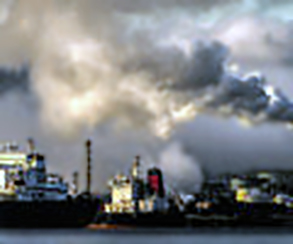With increasing demands on owners and operators to improve efficiency while also preparing for decarbonization targets, the maritime industry is facing multiple challenges. While the development of alternative fuels is a critical element in the decarbonization journey, the need to increase efficiency and reduce energy consumption is also a key part of this equation. Propulsion solutions are central to this efficiency gain as the journey towards zero-carbon vessels continues.
Bernd Bertram, Vice President – Propulsion, Wärtsilä shares his thoughts. “The past decade has been one of great change in the maritime industry as it looks to navigate the conflicting megatrends of globalization and decarbonization,” observes Bertram. “Ensuring vessel compliance with IMO targets requires investment but now, with the Poseidon Principles initiative, such investments are not only about meeting targets, they are about ensuring profitability, asset financing and access to local incentives. It is now a business imperative to have the lowest possible Annual Efficiency Ratio (AER) and the highest possible fuel efficiency, and we have the technology – and the people – to help achieve this.”
A holistic approach to decarbonization deadlines. “It’s a given that operators need to make efficiency improvements, both to cut costs and to reduce emissions, and the best results are achieved with an integrated efficiency package,” points out Bertram. “Together, our propulsion technologies are capable of delivering the efficiency needed to meet current and upcoming regulations, and we also help owners to build a case to gain access to local funding streams. Improving fuel and propulsion efficiency is also the most effective way to reduce a vessel’s operating costs.”
Different vessels and trading areas require different solutions. Wärtsilä carefully ensures solutions are customer-tailored. “We always carry out a detailed study to give customers the opportunity to compare different solutions and find the right one for their vessel and its area of operation,” shares Bertram. “Adding value is at the very heart of what we do, and customers often come to us with a specific challenge or objective and ask us to help them solve it. For example, Wijnne Barends needed a very specific propulsion solution for Baltic conditions, and needed to reduce fuel costs, so we worked with them to develop the right solution to fit their needs. Our propulsion efficiency packages allow us to integrate and optimize our energy-saving technologies for the customer’s specific vessel and application, giving highly attractive efficiency improvements from just one supplier, with optimized vessel layouts, reduced design costs and lead times, better assurance of full-scale performance, and full integration with onboard systems and software.”

Bernd Bertram, Vice President – Propulsion, Wärtsilä
People, passion and performance. Wärtsilä’s propulsion business consists of three business lines: thrusters and propulsion controls; propellers and transmission; and waterjets – with a technology function that underpins them all. Each business line offers market-leading technology and solutions and working together to deliver the best results. The company is widely recognized as having the widest capability and portfolio of any original equipment manufacturer (OEM) in the industry, but Bertram is quick to reiterate that it’s not just the advanced technologies that make the difference. “We have about 550 engaged and talented colleagues in our propulsion business, all working together to shape the industry, drive decarbonization and provide the best solutions for our customers. Our Technology teams use their expertise to develop, validate and design not only new products but also to enhance our existing offering by combining technologies in different ways to create added benefits for our customers. Having an inspiring and exciting workplace is important so we can attract and retain the best and most knowledgeable professionals in the business,” he explains.
The industry’s best solutions all in one place. As awareness about the work required to meet the requirements for 2030 and beyond grows, Wärtsilä has been proactive in considering what its role can be beyond its current OEM portfolio. “We realized early on that a holistic offering can be best delivered by working with others to help lower our customers’ emissions,” explains Bertram. “By adding innovative new solutions and capabilities and integrating them into our propulsion offering, we’re ensuring that our customers can enjoy the benefits of a total solution. Products like Kuribayashi Steamship Co.’s Gate Rudder, Anemoi Marine Technology’s Rotor Sails, and Silverstream Technologies’ Air Lubrication System help us to achieve significant emission reductions. Partnerships and collaboration are very important to Wärtsilä – we see these innovations as part of our holistic solution to the challenge of decarbonization and a way to offer a totally comprehensive value proposition to our customers.”
Looking to the future, Bertram is convinced that efficient propulsion will continue to be key. “Vessels will always need propulsion, but in the future that could be achieved in a combination of ways: wind sails, batteries, fuel cells or smaller engines, for example. In all probability the prices for bio-based or synthetic fuels will be more expensive than fuel is now, so even when your vessel can operate on these future fuels you will still always do well to make it run as efficiently as possible. In this way, increasing propulsion efficiency is only going to become more important as we continue towards a zero-carbon future for the industry.”
